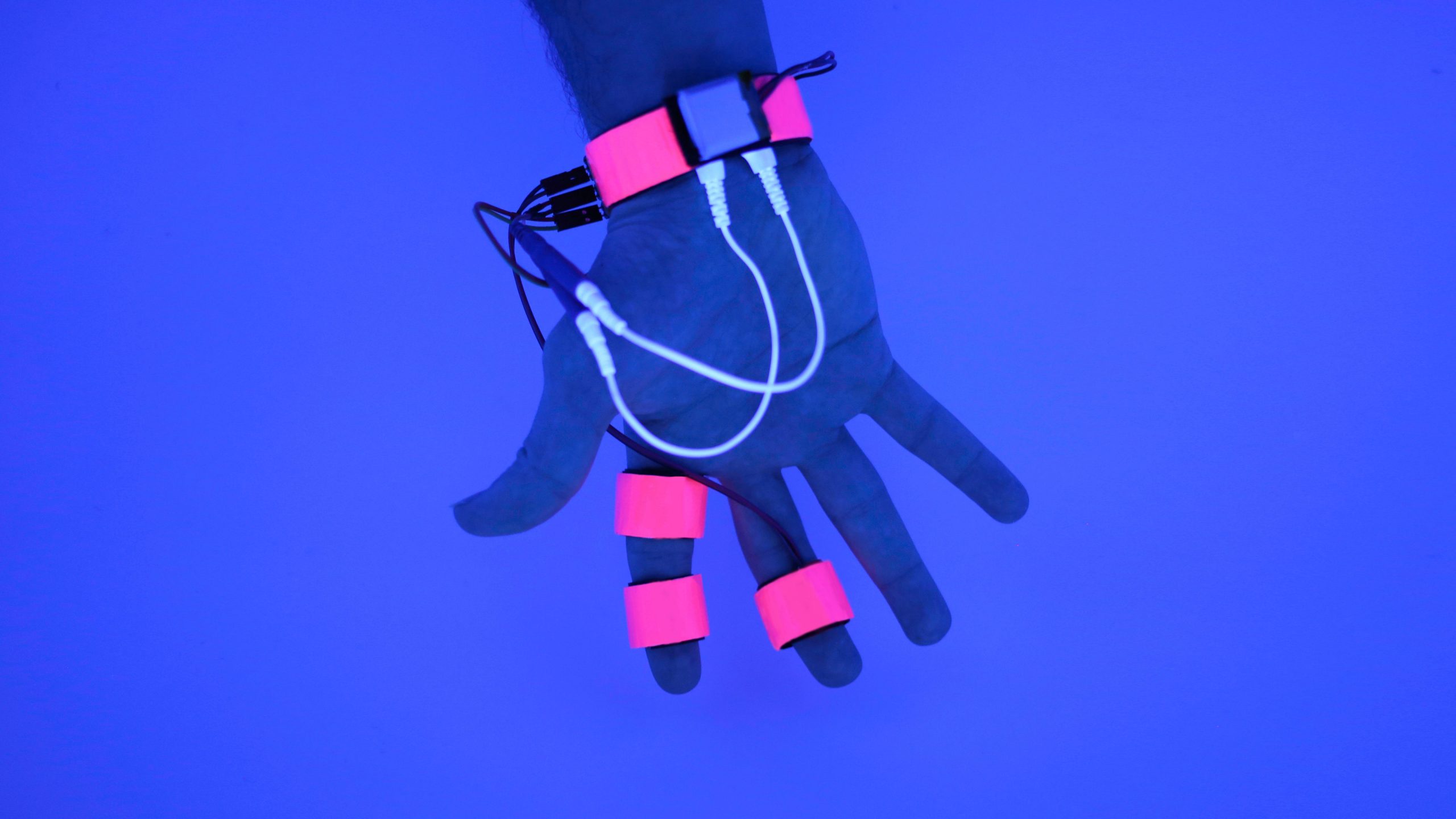
Oscar Rosello/MIT
- A team at the MIT Media Lab has created a device that could help people shape the content of their dreams.
- Called Dormio, the device consists of a bracelet that tracks sleeping patterns and an app that uses recorded messages to suggest dream topics.
- In a recent study, 67% of people that Dormio told to “think of a tree” then reported dreaming about trees.
- Visit Business Insider’s homepage for more stories.
Tomás Vega wanted to dream about Oompa Loompas.
The technology engineer — and self-proclaimed wannabe cyborg — has been developing a device with other researchers at the MIT Media Lab that could help people shape their own dreams. So when he tested it himself, Vega recorded the Oompa Loompa song from “Willy Wonka and the Chocolate Factory,” and instructed the device, called Dormio, to play it to him as he drifted off.
Sure enough, Vega told LiveScience, his semi-conscious mind conjured the iconic scene.
“I started dreaming about being in a chocolate waterfall, surrounded by Oompa Loompas singing ‘Oompa Loompa, doopity doo,'” he said.
Vega and his colleagues tested Dormio on group of 50 people this summer. Their results, published last month in the journal Consciousness and Cognition, suggested that Dormio could indeed spur people to dream about topics of their choosing.
Control over what you dream about

Fluid Interfaces group, MIT Media Lab
The Dormio system consists of two parts. The first is an app that can play and record audio; the second is a wearable device that attaches to a person's wrist, forefinger, and middle finger. The device monitors a wearer's heart rate, the position of their fingers, and other cues to track sleeping patterns.
Dormio activates when its users enter hypnagogia, the earliest stage of sleep. Like REM (rapid-eye movement) sleep, people can dream in the hypnagogic state. But during that phase, they can still hear the outside world and are less fully immersed in their dreams overall.
"This state of mind is trippy, loose, flexible, and divergent," Dr. Adam Haar Horowitz, the lead author of the recent study, told MIT News in July. "It's like turning the notch up high on mind-wandering and making it immersive."
For Horowitz' study, participants first recorded their own voices saying: "Remember to think of a tree." As each person prepared for sleep, Dormio played this prompt.
Once the device detected that a person had entered hypnagogia, it would play the prompt again. After a brief period, it would wake the person with another prompt: "Please tell me what was just going through your mind." The person would explain his or her dream.
Dormio cycled through the prompts multiple times, with each participant setting their own number of cycles.
By the end, 67% of study participants reported dreaming of trees. The details of the trees varied widely – one person dreamed of a tree-shaped car, for instance.

Photo by Camerique/ClassicStock/Getty Images
The researchers also noted that participants' dream descriptions seemed to get more bizarre each time the app woke them up.
For instance, one subject started off by dreaming about "many different kinds" of trees, including pines and oaks. But by the fifth wakeup, that person reported dreaming about "a shaman, sitting under the tree with me, he tells me to go to South America."
Turning dreams into tools
Some research suggests that people who practice skills in their dreams could could improve at those skills in their waking life. For instance, a 2015 study found that people who practiced a finger-tapping exercise during a lucid dream – a dream in which the sleeper is self-aware and can control what happens – improved at the task significantly compared to those who didn't practice in their sleep.
Other studies have shown that dreaming in a foreign language may help someone improve at that language. And some anecdotal evidence suggests that dreaming about certain subjects can also help people with creative problem-solving. Horowitz writes about how Thomas Edison and Salvador Dalí each dreams to help them design their inventions and paintings.
While Dormio may not be able to induce lucid dreams in everyone, it could encourage peoples' dreams to go in useful directions, Horowitz wrote in the study.
"Similar to the experiences of Edison and Dali, the Dormio device could take advantage of the sleep onset period to incubate specific problems and generate specific solutions," he said.
Dormio isn't on the market yet, but Pattie Maes, a coauthor of the study, said something like it could be soon.
"This work has the potential to lead to new commercial technologies that go beyond sleep tracking," Maes said in a press release.
Several other universities have also begun studying Dormio's potential, including Harvard, Duke, and the University of Chicago.
